Care of critically ill patient, requires spontaneous& accurate decisions so that life-protecting & lifesaving therapy can be properly applied. Statistics reveal that every minute a human is losing his/her life across the globe. More close in India, everyday many lives are affected by heart attacks and more importantly because the patients did not get timely and proper help . In this paper I am presenting real time patient monitoring system along with additional facility that aims to expand patient monitoring over a wider area such as a remote village or town. The idea behind this is that remote places usually lack proper health care facilities and good doctors to treat various diseases. The patients could be scattered in various places including hilly terrain, where doctor’s frequent availability is not practicable. An Ad-hoc sensor network based solution is provided along with real time patient monitoring system. The proposed technique is intended specifically for remote rural areas where the infrastructural facilities such as the internet, GSM/GPRS etc are not available.
Keywords |
| Sensors, Network, Health Care Centres, Base Station, GSM module |
INTRODUCTION |
| In the field of health monitoring the current most important user groups are those aged 40 and more. The group of 40+
users shows more diversity in their health conditions than younger people. There are ring-type pulses monitoring sensor
available in the market in which the measured data are displayed in the LCD and cannot be transmitted out of the ring.
Thus, it is not possible to continuously monitor the vital parameters such as temperature, pressure and pulse from a
distant location. In a hospital either the nurse or the doctor has to move physically from one person to another for health
check, which may not be possible to monitor their conditions continuously. Thus any critical situations cannot be found
easily unless the nurse or doctor checks the person’s health at that moment. This may be a strain for the doctors who
have to take care of a lot number of people in the hospital. In such situations, remote patient monitoring using the
bandwidth guaranteed internet services has been seen as a success factor in healthcare organizations [6]. |
| In order to keep in track of critical health conditions, a real time health monitoring system of patient based on Sensors,
GSM, and SMS along with ad-hoc is designed and developed in this project. Wireless Ad-hoc Sensor Networks (WSN)
are a class of networks that are deployed for sensing, processing and transferring a set of parameters in an
infrastructure-less terrain, within certain requirements such as accuracy, latency and Network availability [5]. These
networks consist of a large number of wireless nodes that monitor, understand and possibly control a set of parameters
in the physical world |
PROBLEM STATEMENT |
| There are some shortcomings present in existing system. Currently there are number of health monitoring systems
available for the ICU patients which can be used only when the patient is on bed. This system is wired everywhere.
The patient is monitored in ICU and the data transferred to the PC is wired [3]. Such systems become difficult where
the distance between System and PC is more. The available systems are huge in size. Regular monitoring of patient is not possible once he/she is discharged from hospitals. These systems cannot be used at individual level. The other
problem with these systems is that it is not capable of transmitting data continuously also range limitations of different
wireless technologies used in the systems. So to overcome these limitations of systems I have proposed a new system.
This system is able to transmit the parameters of patient continuously and over long distance wirelessly [5]. Due to
which we would be able attend the patient immediately. Therefore by developing a system that can constantly measure
the important parameters of patient’s body and which can alert the closed ones and the doctor on any time when the
patient’s condition gets bad, this can really provide quick service and be beneficial in saving a lot of lives. |
REAL TIME SYSTEM WITH AD-HOC SENSOR |
| The overall system components are depicted in Fig.2. The system which we proposed to develop shown in figure.2
would not only help in monitoring the patient when he is in the bed but also when he is not in the bed i.e. when he is
mobile. Such a system would constantly monitor important body parameters like temperature, heartbeat, ECG and
would compare it against a predetermined value set and if these values cross a particular limit it would automatically
alert the doctor and relatives of the patient via a SMS. In such case the patient will get a very quick medical help and
also would save time and energy of the relatives who would not be with them all the time. |
| A. Body Wearable Sensors: |
| The vital patient parameters such as ECG, pulse rate and temperature are measured via the wearable sensors on the
patient, even as the patient is carrying out his normal duties at home. The measured parameters are transmitted in a
wireless manner to the nearest node of the Ad Hoc network. |
| Sensors used are described as follows:- |
| 1 .ECG SENSOR:- |
| ECG is primarily a tool for examination of cardiac diseases. An ECG sensing device commonly consists of a group
of electrodes to detect electrical events of a heart. The ECG is the electrical manifestation of the contractile activity
of the heart, and can be recorded fairly easily with surface electrodes on the limbs or chest. The rhythm of the heart
in terms of beats per minute (bpm) may be easily estimated by counting the readily identifiable waves. |
| The amplifier takes the input from 3 electrodes which are connected to the patient. |
| 2. TEMPERATURE SENSOR LM35:- |
| LM35 series are precision integration-circuit temperature sensors whose output voltage is linearly proportional to the
Celsius temperature. The LM35 does not require any external calibration or trimming to provide typical accuracies.
This is 3 legs IC that directly gives analog output. This unit requires +5VDC for it proper operation. |
| 3. HEART BEAT SENSOR:- |
| Heart beat sensor is designed to give digital output of heat beat when a finger is placed inside it. This digital output can
be connected to ARM directly to measure the Beats per Minute (BPM) rate. It works on the principle of light
modulation by blood flow through finger at each pulse. |
| ICLM358is used for Heart Beat Sensor. Its dual low power operational amplifier consists of a super bright red LED and
light detector. One will act as amplifiers and another will be used as comparator. LED needs to be super bright as the
light must pass through finger and detected at other end. When heart pumps a pulse of blood through blood vessels,
finger becomes slightly more opaque so less light reached at the detector. With each heart pulse detector signal varies
this variation is converted to electrical pulse. |
| B. Ad-Hoc Network: |
| The Ad Hoc network is set up in the remote patient location. The first node closest to the patient location collects the
sensor data and uses the routing protocol to transmit the information to the farther node via intermediate routing nodes. |
| C. Base Station/ Server: |
| Base station is located at the primary health centre and is used to collect all the incoming data from the sensor network.
It acts as an intermediate node that converts the incoming data to the IP format that can be transmitted to a web server.
From there on, the data traverses over the normal internet. |
| D. Health Care Centre: |
| Health care centre is equipped with internet and computing facilities. Each health care centre covers a specific area
comprising a few adjoining remote villages. The data coming in from the network is received by the base station
collocated at the Healthcare centre. The Healthcare centre pre-processes the data coming in from the network and sends
it to the centralized web server. Once the doctor provides a prescription/advice to a patient, it can be viewed by the
patient or the medical staff at the Healthcare centre. The Healthcare centre also handles the first time registration of
patients. A new patient can register himself at the Healthcare centre where he is provided with the appropriate sensor
and assigned to a particular doctor. |
| E. Centralized Web Server |
| This web server handles all the data coming in from different Healthcare centres. It has a database in which details of
all the patients from remotely located rural areas are stored. This server handles sending out daily reports to the doctors
and also controls the sending of SMS alerts through the GSM Module. |
| F. Email Reports |
| These reports are sent out periodically from the web server to the doctor. |
| G. GSM Module |
| The GSM Module consists of a Hardware which is connected to the server at the doctor’s location.. A set of AT
(Attention) commands are used to send or view the SMSs. The GSM Module needs a SIM (Subscriber Identity
Module) in order to send and receive SMSs. |
| There are two functions associated with the GSM Module: |
1) SMS alerts: |
| Whenever any critical data is received by the web server from any Healthcare centre, the web server sends an alert to
the particular doctor through the GSM Module. |
2) SMS Requests |
| The doctor can send SMS requests whenever he wants to view the details of a particular patient. |
| The overall system representation is shown in Fig. 6. |
CONCLUSION |
| In this paper, the system developed provides a remote patient health monitoring where the patient is located in a far off
inaccessible location. Using ADHOC sensor network environment patient monitoring can be expanded to remote rural
areas where internet, GPRS and GSM facilities not available. |
FUTURE ENHANCEMENT |
| There is always chance to improve any system as research & development is an endless process. Our system is no
exception to this phenomenon. The following future enhancement can be done in the existing project in future:- |
| 1. The following measurements can be done in future: Blood pressure, oxygen saturation and, Galvanic-Skin
Resistance Amenia. |
| 2. Using GPS the exact location of the patient can be detected so that help can be provided in case of emergency from
nearest hospital. |
| 3. Using GPRS module range of data transmission can be increased provided internet facility available. |
| |
Figures at a glance |
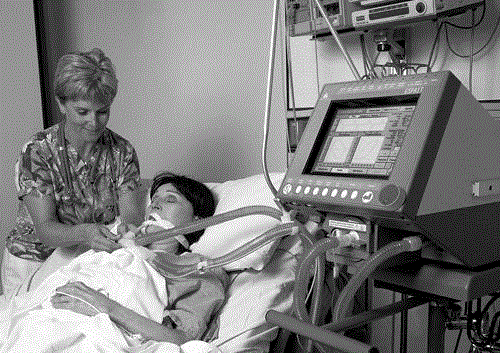 |
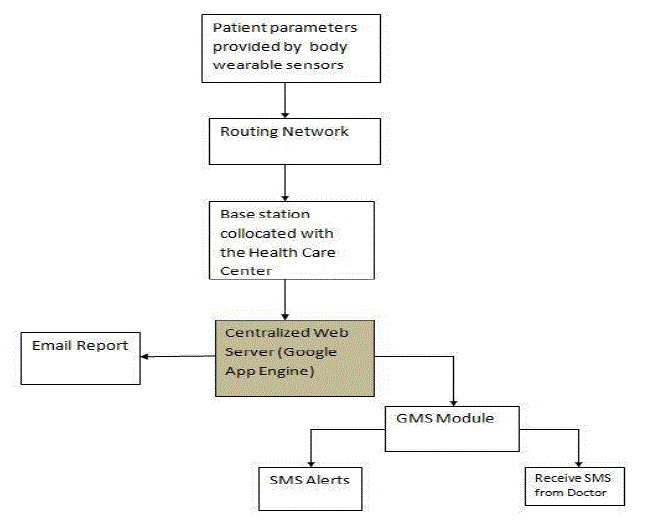 |
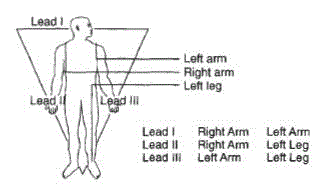 |
| Figure 1 |
Figure 2 |
Figure 3 |
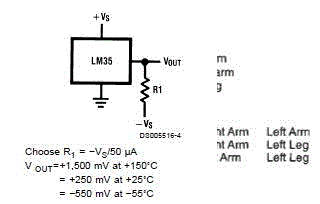 |
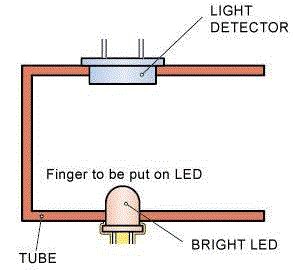 |
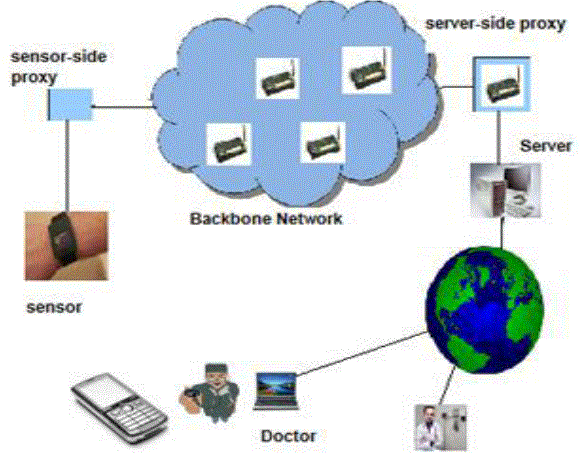 |
| Figure 4 |
Figure 5 |
Figure 6 |
|
| |
References |
- Mukunda N.S, Thrivikrama, P.Vinay, A.Srinivas, Ajay Gupta, âÃâ¬ÃÅA Remote Patient Monitoring System in an ADHOC Sensor Network EnvironmentâÃâ¬ÃÂ, 5th international conference on IT and Multimedia, ISBN: 978-1-4577-0989,10th November 2011.
- Hongzhou Yu, Lu Liu, âÃâ¬ÃÅRemote Health Monitoring system using Zigbee Network and GPRS Transmission TechnologyâÃâ¬ÃÂ, 2011 Fourth International Symposium on Computational Intelligence and design, Volume 1, ISBN : 978-0-7695-4500, 4th November 2011.
- Zimu Li, GuodongFeng, Fenghe Liu, Dong J.Q, Kamova.R, Tang.W, âÃâ¬ÃÅWireless Health Monitoring SystemâÃâ¬ÃÂ, Applications and Technology conference(LISAT)2010 Long Island systems, ISBN:978-1-4244-5550, 8th October 2010.
- Lodaya.P, W.Suman, âÃâ¬ÃÅMovable patient health monitoring using GPSâÃâ¬ÃÂ, Advances in Recent Technologies in Communication and Computing, 3rd International conference 2011.
- K.Ramesh, S.V. AswinKumer, âÃâ¬ÃÅEfficient Health Monitoring System Using Sensor NetworksâÃâ¬ÃÂ, International Journal of Scientific and Engineering research, Volume 3, Issue 6, June-2010, ISSN:2229-5518.
- Wang FengQin, Li Yang, âÃâ¬ÃÅZigbee Technology for Designing and Implementing a Remote Medical Monitoring SystemâÃâ¬ÃÂ, 2010 International Conference on Computer, Mechatronics, Control and Electronic Engineering, Volume: 1, ISBN: 978-1-4244-7956, 6th October 2010.
- Pantelopoulos A, Bourbakis.N.G, âÃâ¬ÃÅA Survey on WearableSensor Based Systemsfor Health Monitoring and PrognosisâÃâ¬ÃÂ, IEEE Transactions on Systems, Man and Cybernetics, Part C: Applications and reviews, Volume 40, Issue: 1, January 2010.
|